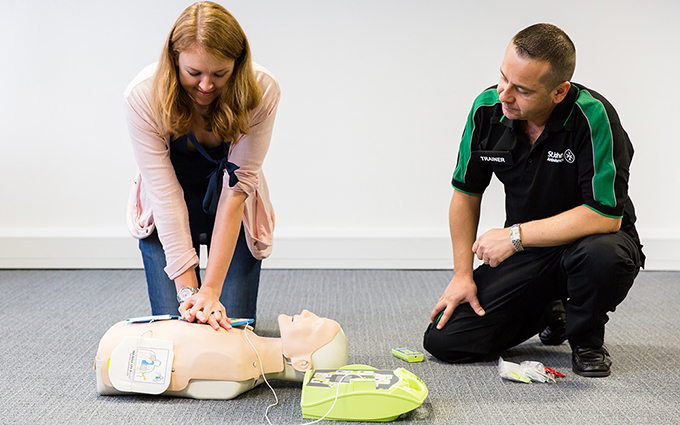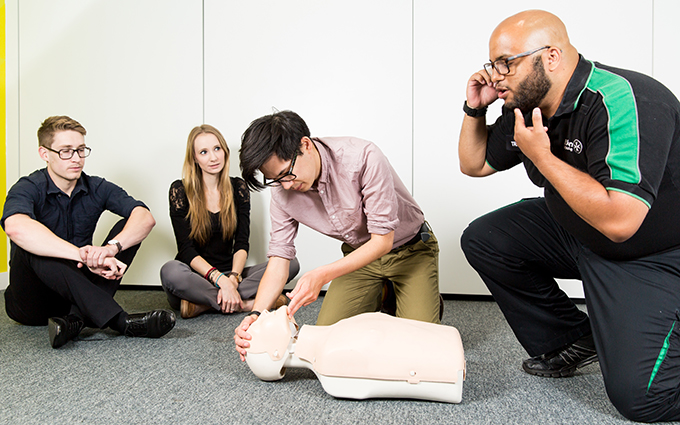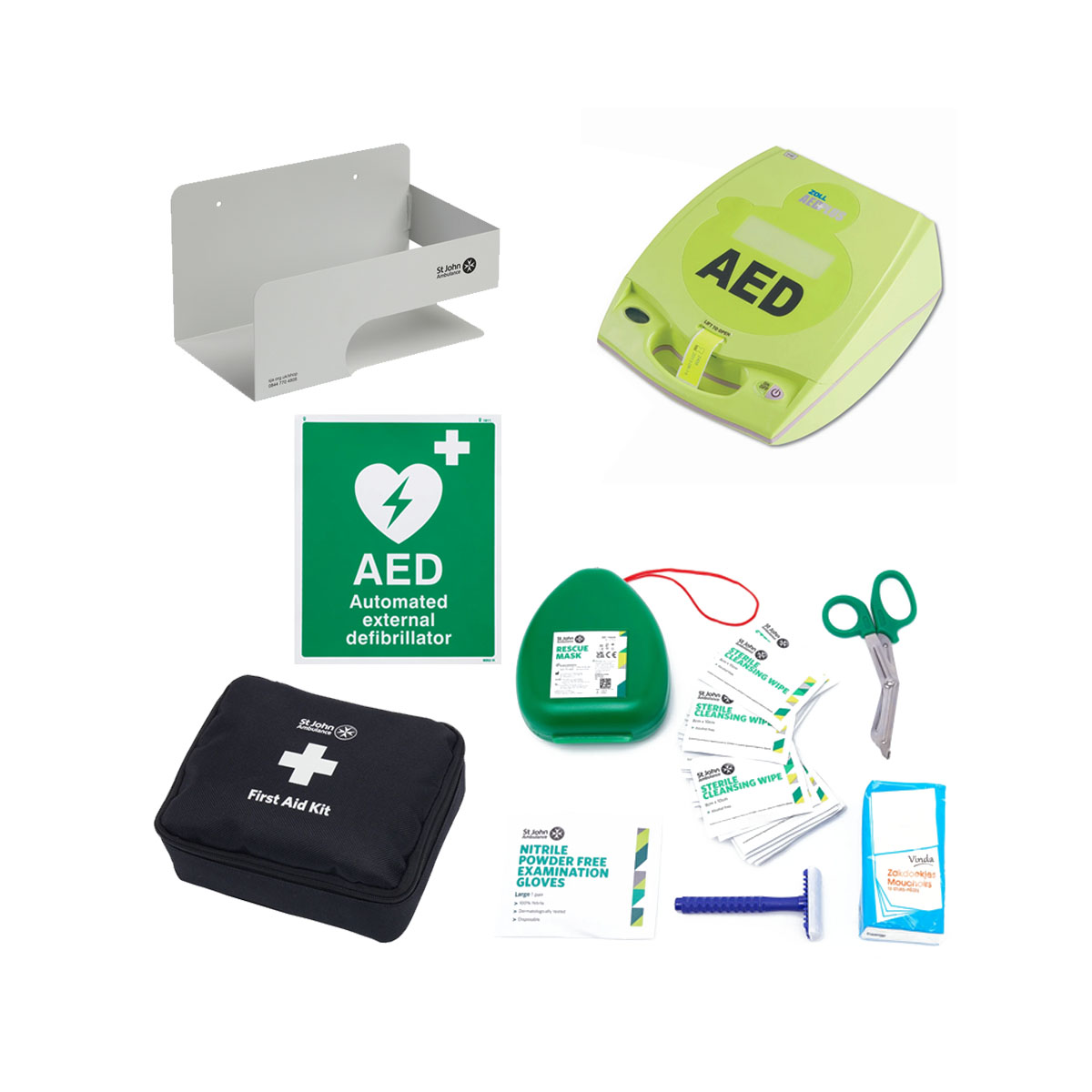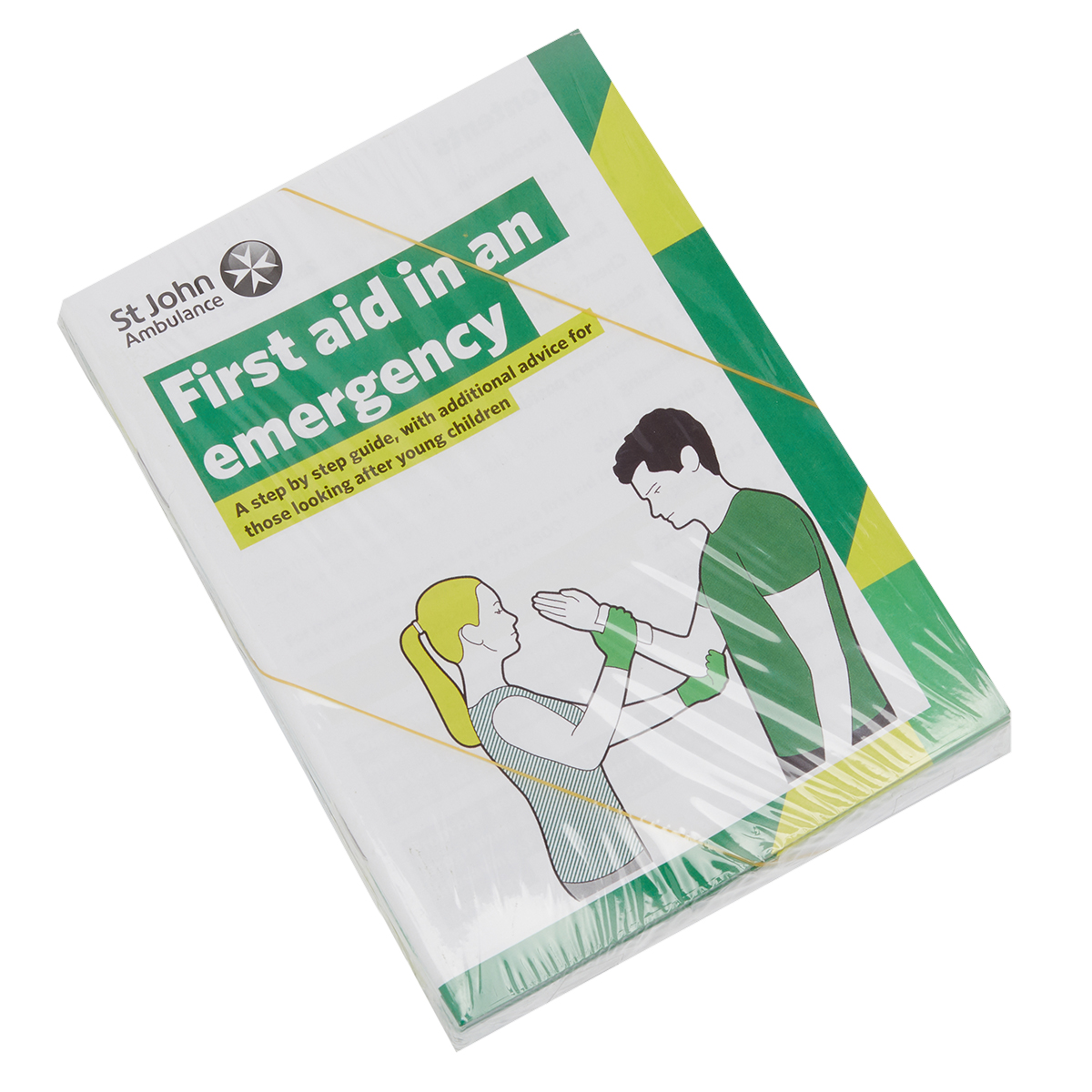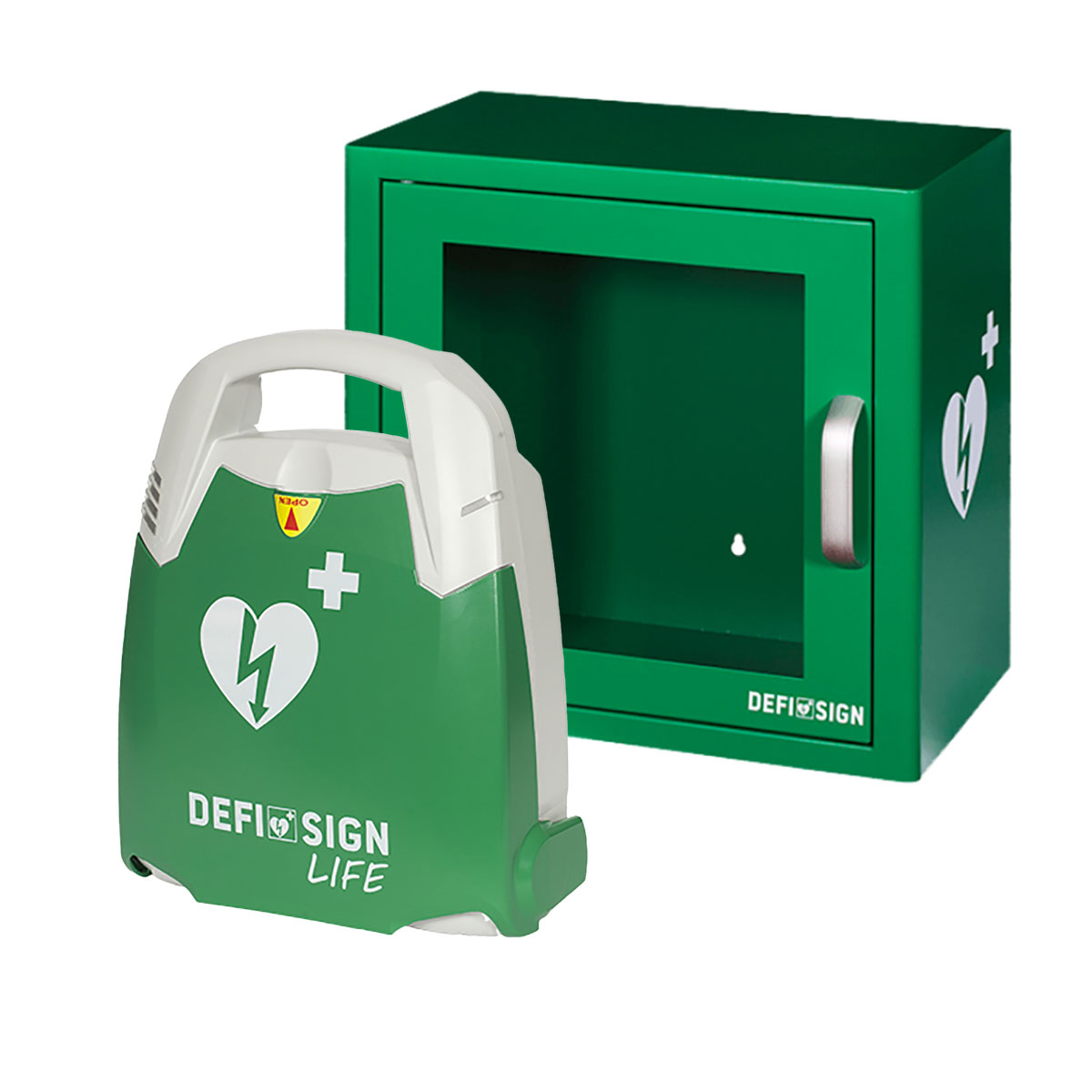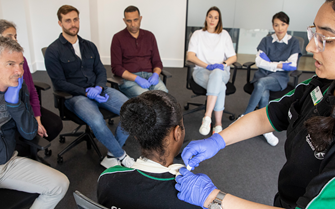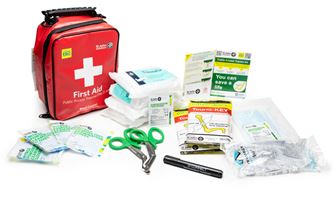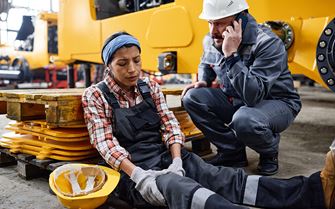Published: 18th June 2025.
Last updated: 18th June 2025.
Author: Lisa Sharman.
Contents

Fast action is vital for improving outcomes in emergencies. In our recent LinkedIn Live event, we brought together a panel of experts to discuss how organisations can ensure they are ready to respond.
The introduction of Martyn’s Law – new UK legislation designed to strengthen how public venues, workplaces and event spaces prepare for and respond to the threat of terrorism – has underlined how important it is for all businesses to have robust plans to deal with health emergencies such as mass casualty events.
Here are some takeaways from the session.
Emergencies can happen anywhere
Panellists had a sobering message for businesses – don’t assume ‘it won’t happen to us’.
Moderator Lisa Sharman, St John Ambulance Head of Education and Commercial Training, explained that there were over 600,000 non-fatal workplace incidents in the UK last year, how 40% of workers in transport and logistics have reported experiencing incidents involving weapons, and how there are four knife attacks in schools each week.
Whether it’s an act of violence, an explosion or another event involving mass casualties, even businesses with no history of incidents should avoid complacency. As panellist Darryl Bagley, St John Ambulance Business Development Specialist Trainer, put it, a lack of preparedness is likely to negatively impact the treatment of patients and outcomes, should the worst happen.
Preparedness is not just a tick-box exercise
Martyn’s Law, introduced in response to the 2017 Manchester Arena bombing and named in honour of one of the 22 victims, Martyn Hett, includes establishing protection procedures and ensuring staff are aware of the measures.
Such compliance is the foundation of being prepared. But as the panel discussed, responding to an emergency event is as much about readiness as regulations. Businesses need to build a culture of preparedness throughout the organisation in which staff at all levels understand their role in an emergency and feel confident to act.
A proper risk assessment is a vital step
The first step to deciding what’s needed should be a thorough risk assessment that considers your industry, size and capabilities of your workforce, and the unique aspects of your site – for example, does it have unusual stairwells or exit points?
Location is another consideration, as panellist Grahame Kirsopp, SHE Manager – Energy at Morgan Sindall Infrastructure, noted. What level of response can the emergency services offer and what does your business need to do to fill any gaps? In rural areas or hard-to-reach locations, for example, this may be different from the situation in towns and cities.
From here, businesses can determine the right training, equipment and emergency plans for them.
Confidence to act comes from training and practice
Half of the population says they would feel panicked if they came across a health emergency due to a lack of training. First aid at work courses are a good starting point for addressing this, but for many workplaces, more advanced or even bespoke training will be needed.
James McNulty-Ackroyd, St John Ambulance Head of Clinical Delivery, told the panel that checking airway, breathing and circulation is vital. And in the case of a mass casualty event, one of the most important things a first responder can do is quickly manage things like life-threatening bleeding to help save lives in those first few moments. The training St John Ambulance provides has evolved to reflect this and teach people those skills.
The goal, added Alex Lawson-Turner, a St John Ambulance First Aid Trainer, is to get everybody to a point where they are happy to act fast and be clear about what action to take. Specialist training builds this confidence to act under pressure. The most important thing to remember is to ensure everyone in your building is safe and looked after – you should not cut corners on safety, she added.
Regularly practising for scenarios your business might face is also essential, the panel agreed. Ideally, drills shouldn’t be conducted around a table in a meeting room, but in a more realistic environment that better reflects the situation.
Equipment is just as vital as training
McNulty-Ackroyd noted that Martyn’s Law puts emphasis on ensuring that spaces with high footfall have adequate equipment on-site to deal with that number of people. And it’s not just about buying the equipment, but knowing which equipment you need and ensuring it’s accessible to everyone.
Public Access Trauma (PAcT) kits, designed to save lives in public places, include clear instructions on how to use equipment, such as a tourniquet. This means even those without prior training can provide life-saving assistance. However, the panellists agreed that preparedness plans must also ensure that on-site personnel are properly trained to use any necessary equipment.
Mental health support is a vital part of emergency response
Traumatic incidents are not just an assault on our physical wellbeing. Those caught up in the event are likely to suffer shock, and possibly grief and longer-term mental health issues, including post-traumatic stress. This means it's vital to take a holistic approach to workplace first aid.
Having trained staff on hand to provide emotional support can make a critical difference to recovery.
A recurring theme throughout the St John Ambulance LinkedIn Live was that emergency preparedness must become part of the workplace culture for organisations to be truly ready to respond. That means leadership buy-in, clear communication, regular practice and fostering an environment where every employee feels capable – and empowered – to act.
St John Ambulance offers a full range of training courses and equipment to help achieve this, including help with risk assessments, bespoke first aid and scenario training.
Missed the live event? Watch it back now: https://www.linkedin.com/events/beyondthelegislation-embeddingm7335977974606782464


